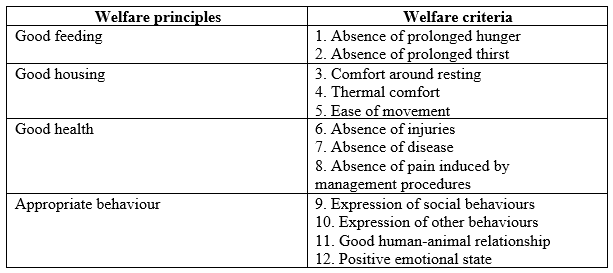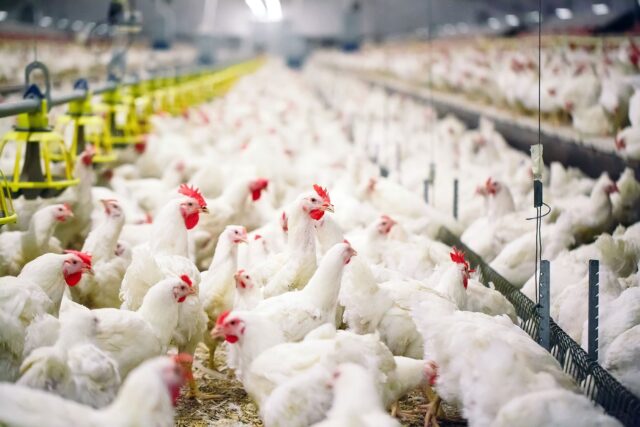Abstract
Animal welfare refers to an animal’s capacity to adapt to its environment. As the population of the world increases, there is a demand for food, especially meat. The production of poultry has significantly improved over the past few decades thanks to meticulous monitoring of a number of factors, including management and nutrition (health rearing systems, and environment). The current trend in animal farming is toward better welfare conditions. Definitions, measures, interpretations, and perceptions related to farm animal welfare or well-being, however, continue to be contentious problems. This is an overview of the problems with poultry welfare, from its definition to different industries and environments.
Introduction
India is the world’s 3rd largest egg producer and the 5th largest producer of poultry meat. The Indian poultry market, worth INR 1,750 billion in 2018 and further projected to reach INR 4,340 billion by 2024, growing at a CAGR of 16.2% during 2019-24. India exported 5, 44,985.06 MT of poultry products to the world, worth Rs. 687.31 Crores during the year 2018-19. Recently, the business of raising poultry for meat or eggs is becoming more and more concerned about animal welfare. Consumers who want increased welfare standards, supermarkets and retailers that often adapt to consumer trends, and animal activists with personal agendas are all contributing factors to this. Regardless of the reasons, animal welfare should be prioritized on an equal level with all other aspects of poultry production. Despite the fact that chickens are significantly different from people, it is believed that they can experience emotions like pain or anger. In order to ensure the well-being of such a huge number of animals, ethical consideration must be put into the raising of poultry.
Animal Welfare
In the Oxford English Dictionary, welfare is linked to “well-being; happiness; and thriving or successful progress in life”. The World Organisation for Animal Health (OIE) definition of animal welfare refers to how well an animal is able to cope with the conditions in which it lives. Animals must also be able to display behavior that is important in a captivity environment and must not experience unpleasant mental states like pain, fear, or distress.
Since 1965, when the Brambell Committee proposed that farm animals should have five fundamental “freedoms” of movement, including the freedom to stretch and the freedom to turn around, the welfare of farm animals has been regarded as a formal discipline in the United Kingdom. The United Kingdom’s Farm Animal Welfare Council (FAWC, 1979) revised these Five Freedoms in 1979 and proposed Five Freedoms that all farm animals should have:
- Freedom from hunger and thirst
- Freedom from discomfort
- Freedom from pain, injury, and disease
- Freedom to express normal behavior
- Freedom from fear and distress
Measures based on resources and animals
To evaluate animal well-being, farms and other livestock businesses can utilize the measures. Early evaluations of animals on farms relied on determining whether essential resources were present; these assessments are known as resource-based measures. However, the mere existence of a resource does not imply that it is being utilized efficiently. Consequently, there has recently been a movement toward direct animal observation and measurement utilizing animal-based outcome measures.
Table 1: As outlined by Welfare Quality, welfare principles and criteria

The majority of the suggested measures of the Welfare Quality Project are outcome measures based on animals that might be used to evaluate each of the 12 welfare criteria for poultry. Therefore, the lack of hunger can be evaluated by grading emaciation on a scale and the degree of thermal comfort by observing whether birds are panting or huddling. Thus, measures for each criterion can be given different weights, with higher weights given to criteria that are thought to be especially important.
Scientific assessment of welfare
It is important that the measures used on farms to assess animal welfare are more scientific in nature, to ensure that they really do measure factors associated with quality of life. The scientific assessment of poultry welfare usually depends on measuring a range of Physiological, Physiological, and Clinical indicators.
Early studies examined the environmental choices of chickens for food types, laying, foraging, exploratory materials, heat and lighting, and social conditions. Important new scientific research is examining how welfare indicators and the environmental choices of chickens interrelate.
Interactions between Welfare and Productivity
It is a common misconception that good output would automatically result in good well-being, but the connection between the two is more complex than this. The welfare and production are positively correlated in the next two situations:
- In some backyard, village environments, chickens may be able to express normal behavior, but their overall welfare may be poor if they are affected by disease, parasitism or malnutrition. Addressing these welfare issues will also result in increased productivity.
- In many cases, acute or chronically stressful events will reduce productivity. For example, moving hens from pens to cages produces a marked short-term decrease in egg production. Similarly, chronic stress can impair immune function and lead to increased disease and mortality, and reduced production.
However, in the next two examples, welfare and production are in conflict:
- Intense genetic selection for production traits can have adverse consequences on other aspects of bird health. For example, laying hens selected for high egg production have increased skeletal and broiler chickens selected for very high growth rates have problems with leg health and lameness.
- Restricting the quantity of feed fed to broiler-breeding flocks/birds is a normal management method because egg production and hatchability are poor if female breeding birds are fed ad libitum.
Major Welfare issues
- Welfare issues in a village environment
Birds in rural areas are typically native breeds, which can typically adapt to their surroundings better than breeds that have undergone considerable genetic selection for product features.
Issues:
- Disease transmission is high in backyard poultry systems, often resulting in low productivity and high mortality
- Unavailability of appropriate nutrition.
- Lack of access to a source of clean and cool water.
- Unavailability of proper shelter
- No temperature maintenance
Most of these welfare issues can be addressed by improved veterinary care and nutrition and the provision of simple facilities such as clean drinking water and shade.
- Welfare issues of broilers in commercial production
The major welfare issues linked with broilers are Leg health problems, lameness, metabolic disorders, and hunger
- Welfare issues of laying hens in commercial production
The major welfare issues linked with layers are bone fracture, cage layer fatigue, injurious pecking, osteoporosis, behavioral deprivation resulting from housing in cage systems and unequal access to facilities for birds housed in non-cage systems
- Welfare issues during transport and slaughter
High levels of stress resulting from improper handling, as well as discomfort and stress if birds are not adequately stunned before slaughter, are the main welfare issues that arise during transport and slaughter.
Advantages of implementing poultry welfare
1) Acceptance by customers
People all across the world are becoming more and more conscious of the significance of farm animals’ welfare. Customers are curious about where their poultry products are produced.
2) Improved market opportunities
Currently, the World Trade Organization (WTO) adheres to a free-trade policy and forbids nations from imposing trade restrictions due to different standards for animal welfare. The WTO multilateral trade negotiations are being pushed by the European Union (EU) to include welfare. In such a case, imports would have to comply with fundamental EU requirements in order to be sold here.
3) Employment generation
Enhancements in animal welfare can provide employment in countries where it is difficult to find job. Women and children raise chickens in many developing nations, including India. Women can increase their productivity and potentially help to reduce poverty by learning how to raise chickens in accordance with the highest welfare standards.
Conclusion
Welfare in the animal production system is becoming important day by day as the consumers as well as the producers are becoming aware. Future demands are in favor of improved welfare measures for poultry meat production as a result of the greater adoption of these practices in the production system. Ultimately, this will create new markets for the producers in both imports and exports, as well as new employment prospects.
Authors:

Utsav Surati1,2*, Dipankar Paul1, Vikas Diwakar1, Surajit Das1, Ymberzal Koul1,2,
Gaurav Patel1, 2, Anmol1,2
1 ICAR-National Dairy Research Institute, Karnal, (Haryana) India2ICAR-National Bureau of Animal Genetic Resources, Karnal, (Haryana) India















